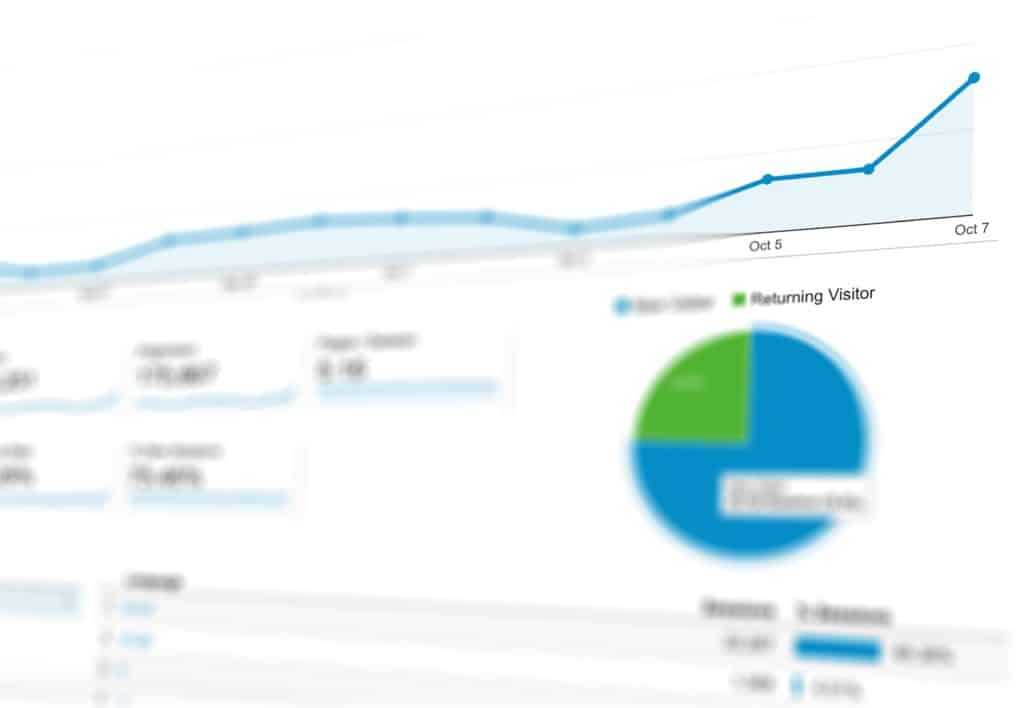Using display advertising for your company’s marketing campaigns is an extremely effective way to capture the interest of internet users. With the use of display ads, graphics and messages can target specific people whose traits fit the ideal “customer” of the company. What are some digital display advertising basics when you’re first setting them up? Keep reading to learn about the best practices for your next display advertising campaign.
What Are Digital Display Ads?
Display ads are the type of banners and ads we commonly see when browsing websites on the internet. They’re different than the type of paid ads run by Google on the search engine results page. Display advertisements exist on web pages that are relevant to the type of product or service being advertised. It can also display on sites within the Google Display Network– pages like news sites, youtube, blogs. The google display network is comprised of sites using products like google ad sense, which allows websites and content creators to run ads across the internet.
Just like using Google ads or any form of digital advertising, you can customized display ads to a specific targeted audience. You can dictate audiences by location (zip code), demographic (age, gender, habits), and other interests (specific needs, a product or service, special treatments etc.). The more specific you get with targeting your ads, the more ideal clients you’ll get responding to your intention of those ads.
Types of Digital Display Ads
The main types of display advertisements include:
- Images
- Test graphics
- Banners
- Video or GIF ads
- Buttons
Digital Display Advertising: Basics of Pricing
Also like online ad campaigns, display advertising is run on a cost per click (CPC) or pay-per-click (PPC) formula. This means that whenever there’s a user clicking on your ad, your campaign charges an amount of money per each ad “click”. Ad costs are based on keyword bids, and overall density of how many other ads are running for specific keywords.
Depending on the demographic, the cost per acquisition– meaning, how much one ad click costs to land a solid call– can fluctuate. Even if it’s a more costly click, but it gets your more quality leads you can land, it’s worth it. The main thing to monitor how your ads/pricing is doing is to use Google analytics to track and measure your display ads.

Retargeting Digital Display Ads: Basics in Content Marketing
Retargeting is when an ad is served to someone who has already searched your website or researched your business. They might have found interest in your company, but they have yet to take any action or purchase with you. The purpose of retargeting is to re-target these categories of people to continually show up in their awareness and encourage them to follow through with an action. Display ads for retargeting are awesome, because they make it convenient for the user, they’re interesting, and they remind those who may have forgotten about your service!
Best Tips for Creating Amazing Display Ads
Firstly, knowing some advertising basics is helpful before creating a display ad. If you’re in marketing already, you probabl;y hear it all the time.
- Compelling offer
- Optimized Creative
- Catchy Copywriting
- Clear Call to Action
Aside from those key non-negotiables, display ad creation needs to have all the things to make someone want to click the ad! What are those main things?
Clear + Straightforward Design
You don’t want you ad to be cluttered to the point where someone is instantly turned off by it. You also don’t want it to be so plain that it fails to catch anyone’s attention. Having a compelling ad includes appealing visuals, appealing brand colors, varying text size, and some type of catchy slogan or message.
Structure in Information
When someone sees your display ad, they should instantly be able to identify what it is you’re offering. It is also necessary to make your logo, brand, or marketing elements clear. The clearer they are in structure, the more likely people are to remember your brand. Potential clients and customers want to see an ad that instantly caters to their wants, needs, and what they are looking for.
Really Prioritize Your Landing Page
With any good display ad comes a link to a landing page when someone clicks! Your landing page needs to be linked to your ad in order for them to have a clear understanding and awareness of what it is you’re offering them through that ad.
A landing page is a one-page site that leads an internet user through the buyer’s journey. The end goal is to get your ideal customer to say “YES” to your offer in a way that will help both of you.
To have a good and effective landing page, be sure to read through how to set up your landing page to land the right conversions.

Keyword Bidding
It might take a few attempts to form the right keywords for your ads. Ad networks often work based off of “bids”. Certain keywords can be bid on for the highest amount you’re willing to pay for someone to click that ad. The lower your bids, the less likely the ad will show up to more “important” internet users in your niche. This can be tricky, and takes practice, as different industries can have different popular keywords, all ranging in bid cost. With enough strategy and optimizing changes, you can get super-specific targeted keywords for as little as pennies all the way up to tens of dollars per click! Learning Google adsense is key to developing a good bidding strategy.
What’s the Best Way to Track a Display Marketing Campaign?
There are a few ways to start seeing greater conversion rates and understand the data after you launch a campaign. There are a few key metrics that expert online advertisers analyze regularly in order to incorporate viable changes along the way. The more you know how to measure and adjust your display ads, the better you can optimize ad creation, improve target/retargeting, and focus on contextual advertising to get more conversions. Here are the main measures to focus on:
Impressions
First thing’s first: Know what your impressions are. An impression is when your display ad shows up to someone browsing a website. So when it comes to analytics, impressions mean the amount of times your ad was literally impressed onto internet users.
Why is this metric important? It’s key to seeing the quantity of when your ad appears and how much performance happens in relation to it. For example, more and more people might be accessing the places where your display advertisement shows up, but if nobody is looking or clicking on it (this means the click-through rate is low– we’ll talk more about this later), it isn’t doing well.
The good news is, whether or not you ad is getting the ideal CTR yet, the growth in your impressions can mean you’re growing in brand awareness. More people are seeing your ads, which means more people are getting familiar with you.
Reach
Reach is the amount of times your ad was actually seen by people. It’s the number of actual views on your ad. How many eyeballs stopped to look and think about your ad instead of scrolling past it.
This is a crucial metric because it lets you know how many people are being reached by your ad. If the amount of impressions is outrageously high, but your reach is dwindling, that means your targeting is off. GET SPECIFIC! You don’t want to waste ads on people who don’t even care to look at it or click on it. The better you can target, the higher click-through rate you will generate.
Click-through Rate (CTR)
The click-through rate is how many people actually see your ad and click on it! This “rate” is measured by a ratio of impressions: clicks. It’s shown as a percentage. So, let’s say your ad has a total of 3,700 impressions this month, but the number of clicks was only 240. That means your overall CTR is currently 6.4%.
Why do you need to know CTR? It lets you know (pretty blatantly) how compelling or effective your ads are. Obviously the number of conversations matter most at the end of it all, but having a catchy ad and knowing the digital display advertising basics can make all the difference. People click on display ads that look enticing, relatable, or something they NEED to see.

Conversions Rates
Now, the main defining factor of digital marketing stats: conversion rates.
Conversion rate = how many people actually click to see your landing page and then take the ideal action within that landing page. Either they subscribe for a free ebook, schedule a call to set a consultation, buy a 60% off item, etc. Whatever the landing page exists for, your ad is trying to get people to get there and want to stay there in order to benefit in some way.
The main things that you need to work on if you have a low conversion rate are probably
- Your landing page optimization
- Your targeting and overall funnel strategies
Want More Than the Digital Display Advertising Basics?
If you’ve read this far, you’re on your way to creating some awesome display ads. However, we know implementing all this information at once can be overwhelming. If you still want to learn more about how to run display ads for the benefit of your business, talk to us and we’d be happy to explain further.
Owl SEM is growing so we won’t be taking as many small business clients in due time. Make sure you get your spot while you can! Schedule a FREE strategy call and let’s see how you can get the conversions rolling in!





